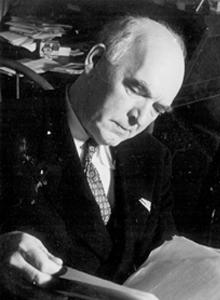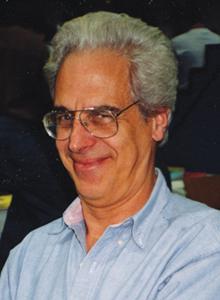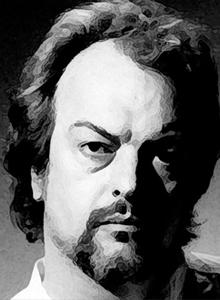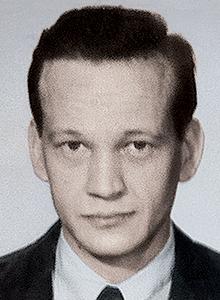Since the founding of the Will Eisner Comic Industry Awards (and their previous incarnation, the Kirby Awards), the following individuals have been inducted into the Hall of Fame.

Mort Weisinger
1915–1978
The Superman editor at DC Comics during the 1940s–1960s, Mort Weisinger is also credited with co-creating Aquaman, Green Arrow, and Johnny Quick. It was under his tenure that many aspects of the Superman universe came into being, from Supergirl and Krypto to the Legion of Super-Heroes and the various types of kryptonite.
Inducted 2010

Major Malcolm Wheeler-Nicholson
1890–1968
In the fall of 1934, Major Wheeler-Nicholson founded National Allied Publications and published New Fun #1, the first comic book containing all-original material. The magazine was retitled More Fun in 1936. Wheeler-Nicholson added a second magazine, New Comics, in 1935, which became New Adventure Comics with issue 12 and finally Adventure Comics with #32. The third and final title published under his aegis was Detective Comics, premiering in 1937.
Inducted 2009

Ogden Whitney
1918–1975
Ogden Whitney is best known as the artist of “Herbie, the Fat Fury,” the strange boy addicted to lollipops who appeared in ACG Comics from the late 1950s to mid-1960s. Herbie (scripted by Shane O’Shea aka Richard Hughes) made his first appeared in Forbidden Worlds in 1958 and got his own feature in 1964. In the later 1960s.
Inducted 2007

Al Williamson
1931–2010
Al Williamson was the “young guy” among the EC artists of the early 1950s, producing classic stories for the various science fiction titles, often in collaboration with Frank Frazetta, Wally Wood, and Roy Krenkel. After the EC heyday, Williamson moved on to draw a wide variety of stories for Atlas, ACG, and other companies. In the 1960s, he found his niche in adventure comic strips, with a regular gig on Secret Agent X-9 and then a memorable stint as the artist on the Star Wars comics strip.
Inducted 2000

Barry Windsor-Smith
1948–
As “Barry Smith,” Barry Windsor Smith became an immediate fan favorite in the early 1970s as penciler for Marvel’s Conan the Barbarian. After pursuing a fine-arts career, producing limited-edition fantasy-themed prints, he returned to Marvel in the 1980s, drawing and coloring Machine Man and writing and drawing “Weapon X,” his own take on Wolverine. In the early 1990s he served as creative director and lead artist at Valiant Comics. Since that time his work has been published by Malibu, Dark Horse, Image, and Fantagraphics.
Inducted 2008

Bill Woggon
1911–2003
Bill Woggon created “Katy Keene, the Pinup Queen” for Archie Comics in 1945. Katy appeared not just in her own book but also in Laugh and Pep Comics, giant comics like Katy Keene Pinup Parade, and occasional issues of Archie Giant Series Magazine. Notable about Woggon’s comics was that he encouraged fans to send in their designs for clothes (as well as cars and even rocketships), for Katy and her accompanying cast of characters. The series ran until 1961. Woggon then went to work on Millie the Lovable Monster for Dell. A revival of Katy Keene comics occurred in the 1980s, with reprints of Woggon’s stories, as well as new stories illustrated by other cartoonists.
Inducted 2015

Marv Wolfman
1946–
Marv Wolfman is best known for Teen Titans and Crisis on Infinite Earths at DC and as the writer/creator of Blade, the Vampire Hunter and Bullseye (the prime villain in the 2003 movie Daredevil) at Marvel. Marv has also been editor-in-chief at Marvel Comics, senior editor at DC Comics, and founding editor of Disney Adventures magazine.
Inducted 2011

Basil Wolverton
1908–1978
Although he will be forever associated with the “Lena the Hyena” drawing he did for Al Capp’s Li’l Abner, Basil Wolverton produced memorable science fiction comics during the Golden Age, including the “Spacehawk” and “Space Patrol” series. He also produced hundreds of caricatures and other drawings in his distinctive stippled style and produced work for MAD.
Inducted 2000

Tatjana Wood
1926–
Tatjana Weintrob immigrated from Germany to New York in 1948, attending the Traphagen School of Fashion. In 1949, she met comics artist Wally Wood, and they married in 1950. During the 1950s and 1960s, she sometimes made uncredited contributions to Wood’s artwork. Beginning in 1969, she did extensive work for DC Comics as a comic book colorist. She was the main colorist for DC’s covers from 1973 through the mid-1980s. She did coloring on the interiors of such acclaimed series as Grant Morrison’s Animal Man, Alan Moore’s issues of Swamp Thing, and Camelot 3000.
Inducted 2023

Wallace Wood
1927–1981
Wallace Wood ‘s art style first captured readers in EC’s science fiction titles and particularly in MAD. He gave the distinctive look to the “Mars Attacks’ trading cards and created, edited, and drew T.H.U.N.D.E.R. Agents in the 1960s. He also produced work for Marvel, including Daredevil, and for DC (All-Star Comics). In his later years, he published one of the most polished fanzines (Witzend) and self-published a wide variety of works, from The Pipsqueak Papers to Cannon and the adult Sally Forth.
Inducted 1992

Bernie Wrightson
1947–2017
Bernie Wrightson is perhaps best known as the co-creator (with Len Wein) of Swamp Thing. He worked for both DC and Marvel early in his career, with Swamp Thing hitting big for DC in 1972. In the mid-1970s Bernie’s work in Warren’s horror magazines brought him further popularity, and in 1975 he formed The Studio with Michael Kaluta, Jeffrey Jones, and Barry Windsor-Smith. During this time he produced the art for an edition of Mary Shelly’s Frankenstein. The early 1980s saw the appearance of his own Captain Sternn for Heavy Metal, the Freakshow and Creepshow graphic novels, and other collaborations with Stephen King.
Inducted 2014